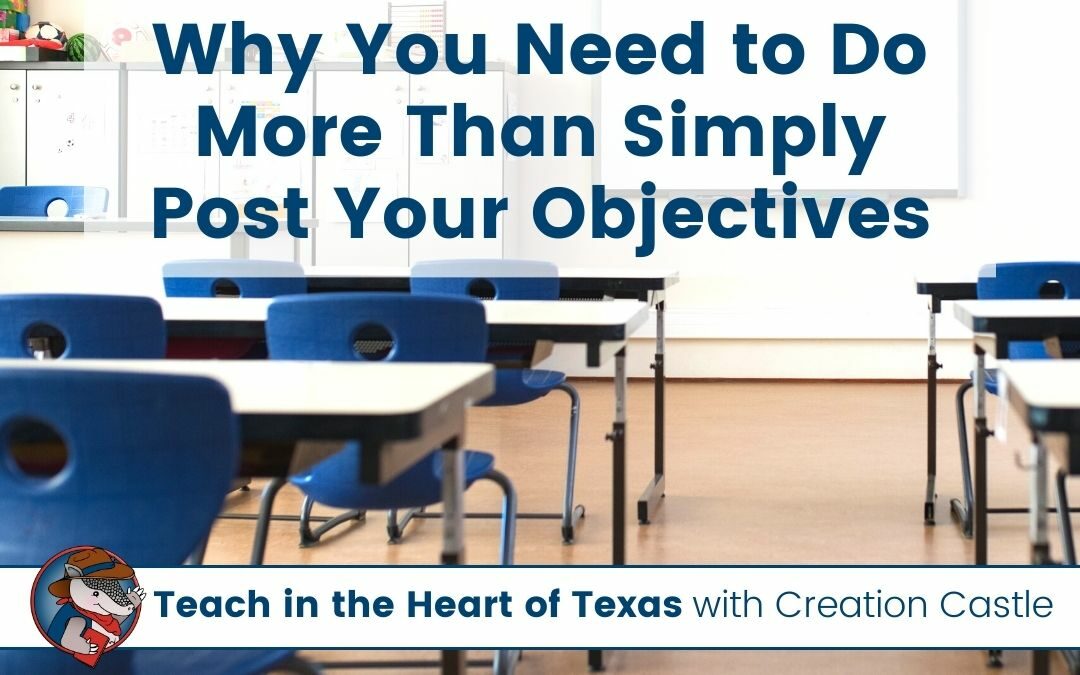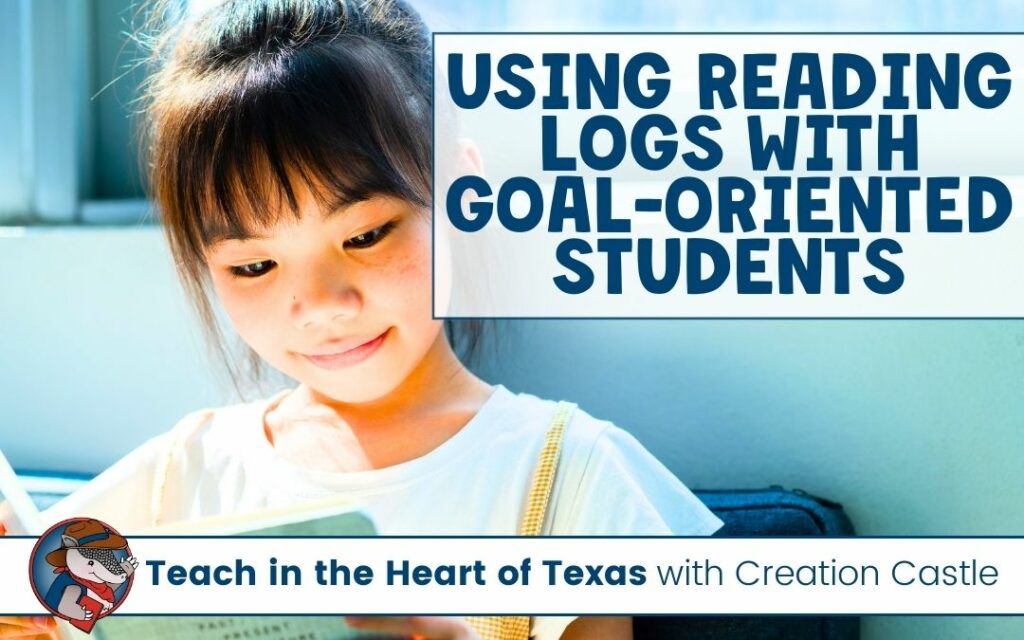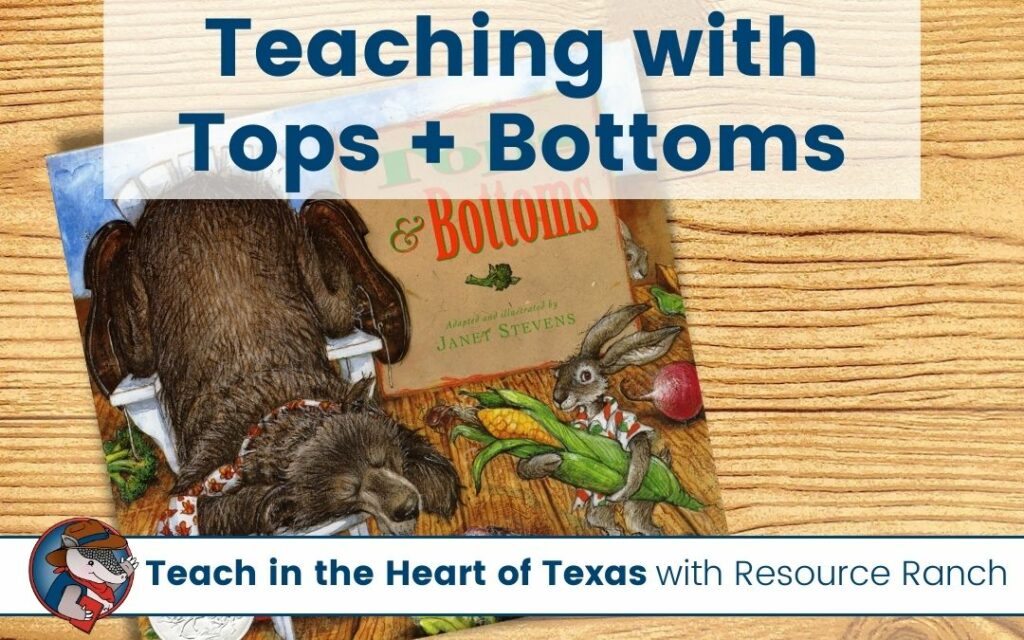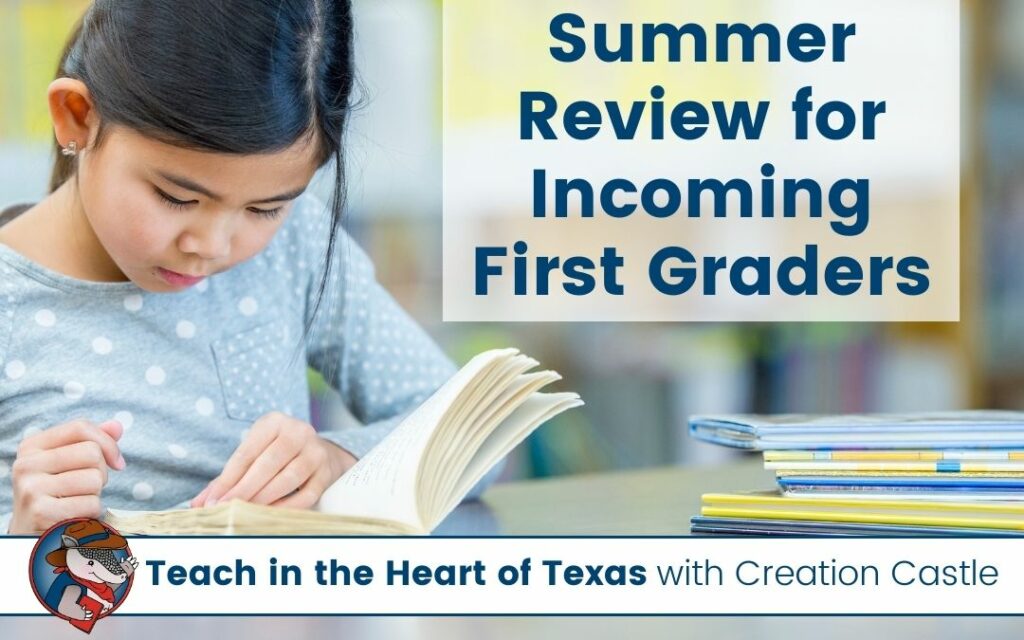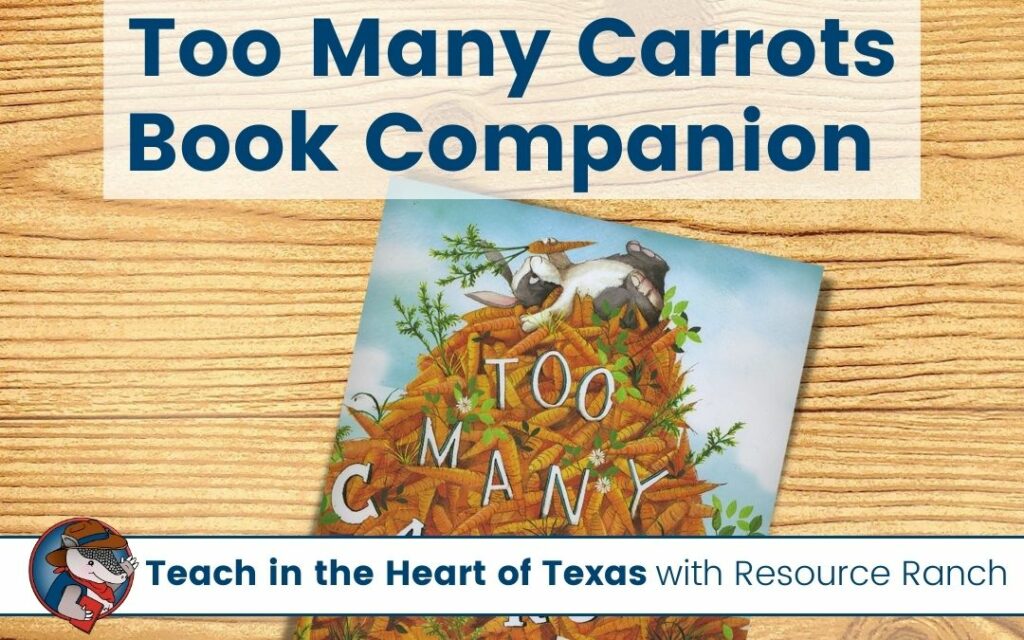Many schools or districts require that learning objectives be posted daily. This can be a time-consuming task if you are wasting your prep time handwriting these objectives on the board.
Utilizing an “I can…” card system can save time by allowing you to simply pull the necessary objectives and display them in your room.
BUT you can’t really just stop there. If all you’re doing is posting the learning objectives and never addressing them, then they are serving no real purpose.
Of course, when you are working with older students (I’d argue fifth grade and beyond) those students can read your posted objectives and have a vague understanding of what you will be talking about. At the very least our sweet friends in kindergarten and first grade need some explicit discussions about what they are learning.
Things to Consider When Posting Learning Objectives
Share in Kid-Friendly Terms
You’ll want to begin by putting your learning objectives in kid-friendly terms, while still keeping the meaning of the objective. Not everything can be simplified and you don’t want to leave out any important details.
For example, in kindergarten, one of our ELA TEKS reads “The student is expected to demonstrate phonological awareness by blending spoken onsets and rimes to form simple words.” (K.2.A vii)
Words like expected, demonstrate, phonological, and awareness are likely words your students won’t know and they aren’t essential to understanding the objective.
For the students, you could phrase this standard to say “I can blend onsets and rimes to form simple words.” Sure, your students won’t know what blend, onsets, and rimes mean, but that is where your explicit instruction comes in.
I think having a visual representation of the standard when possible is a great start! Of course, not everything can be easily represented, but many of our standards can.
For this standard, you could use a picture of any simple CVC word along with the letters used to spell the word. In the example on this card, there is a picture of a fox, and then the word is broken into onset and rime.
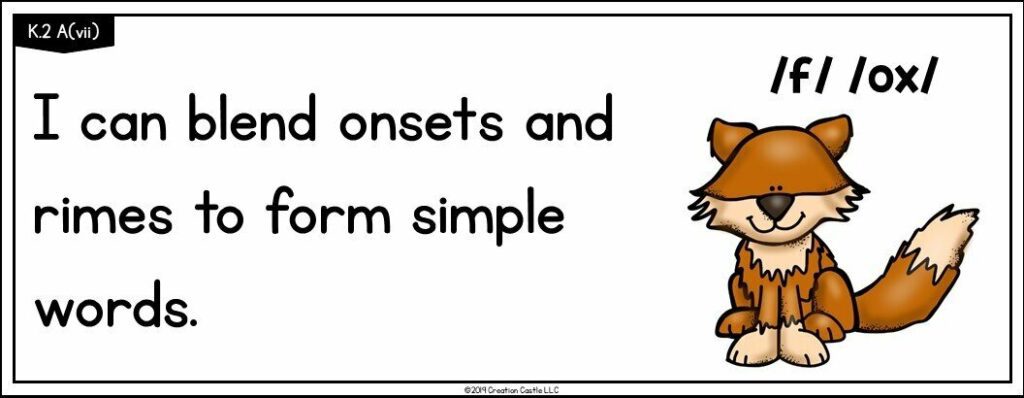
Make Connections to the Real World
Once students understand what the objective is, you need to explain why they are working on the concept. What purpose is the skill serving? Why is it important for their future learning?
In kindergarten, many of your standards are building foundations. You are learning to blend onsets and rimes to become better readers. You are working on handwriting so you can communicate with others.
As students get older, their learning objectives might have more obvious real-world connections. For example, students are learning about ways to earn income so they are able to meet their needs and wants.
Think About Parents
In early elementary where our students are still becoming readers, it almost feels silly to post these learning objectives for the week. They certainly can’t read them and likely won’t understand them until AFTER they’ve learned the objective.
But these learning objectives aren’t just for the kids.
And they aren’t just to appease your administration.
When you have parents visiting your classroom, this is a great way for them to get a sense of what their child is working on and why it is important. It might even sway them to ask their child more questions about what they are learning or make further connections at home.
If the parent of one of your second-graders reads your objectives board and sees that you are working on observing, describing, and recording patterns of objects in the sky, they may decide to take their child to the planetarium on the weekend or simply sit in the backyard and discuss the changes they see in the night sky.
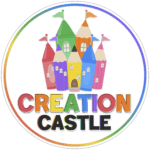
Creation Castle
Heather is the author of Creation Castle. She has experience with general education, special education, and ESL students in kindergarten through fifth grade. She specializes in early elementary math and literacy, as well as organization.

